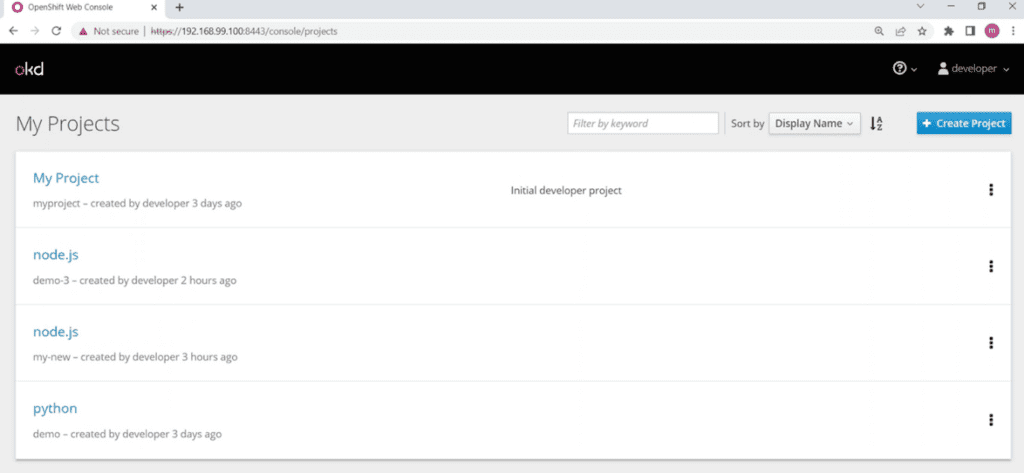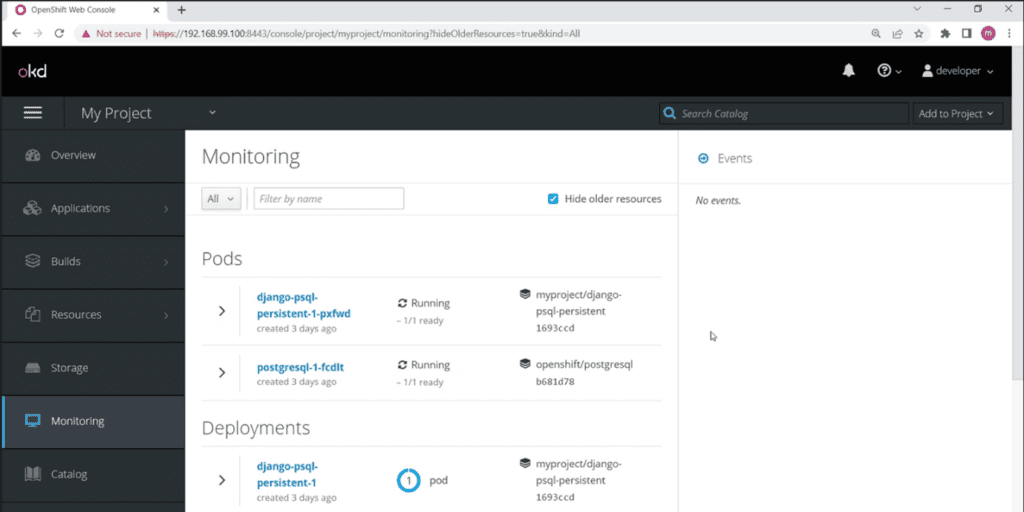- December 13, 2022
- Posted by: Thiruvanai TS
- Category: Cloud Engineering

Containerization has evolved over the years and container adoption is growing rapidly in businesses. Fast delivery and customer experience are the two things that are driving this shift towards containers technology.
With nearly 70-80% of organizations are now in the year 2022 using container-based services according to Gartner prediction, there comes the need for container orchestration. Scheduling containers, provisions for life cycle and health checks, monitoring, authentication, scaling, networking, Image registry and for metrics and logging.
Looking for expert help on Cloud Engineering?
Click Here
Kubernetes and OpenShift are the two widely used container orchestration tools. This article will bring you the benefits of OpenShift over Kubernetes.
Let’s go through the common problems faced by the customers in container orchestration and how OpenShift provides the solution to mitigate the problems.
Use Cases
Organisations who are all using Kubernetes orchestration tool already, are facing lot of challenges.
a. The main and the bigger challenge is managing the security of the Kubernetes cluster and the application. Its organization’s own responsibility to enable authentication & authorization, manage security vulnerability scanning and run periodic security patches
b. Another challenge is designing the cluster network and its configuration. The manual network configuration may lead to create complex network setup which will leads to performance lag.
c. Another one is misconfiguration of cluster nodes and pods. The master node and the worker node configurations are very crucial part, and it is very hard to trace and debug the misconfiguration.
d. DevOps tools integration with Kubernetes is a time-consuming process as we have to setup the CI/CD tools manually and integrate them with OpenShift.
OpenShift has the solutions for all above use cases. OpenShift reduces the time to market from 40-60 % and it saves the 50-60 % of the debugging time.
Now we can see, the overview of Kubernetes and OpenShift and then how OpenShift has the benefits over Kubernetes.
Overview of Kubernetes
Kubernetes as a cluster container orchestration tool, provides a powerful processing structure wherein pods are replicated to ensure application is working effectively and reliably. Hence Kubernetes provides scaling, failover, application isolation and processing speed for applications.
Kubernetes automates deploying, managing, and scaling containers, while other capabilities like automation, monitoring, log analytics, service mesh etc need to be manually configured by the users.
With all that Kubernetes do to orchestrate containers, integration of other components like networking, ingress, load balancing, storage, monitoring, logging , CI/CD pipeline, multi cluster management and accelerating development and deployment of containerized applications at scale need to be done by the user.
Overview of OpenShift
OpenShift comes as a cloud offering by RedHat to provide all these capabilities with Kubernetes at its core. It is powered by OKD (Origin Kubernetes Distribution) which includes
– Kubernetes
– Docker
– Istio
– Tekton
– Prometheus
– Grafana
– RHEL Core OS
OpenShift offered as a cloud-enabled PaaS by RedHat is convenient to develop cloud-based services at a faster rate.
OpenShift helps in managing development lifecycle, standardize workflows, build CI/CD pipeline, and release management for the fastest delivery of applications.
Some of the new features of OpenShift
Podman – The Linux-native tool to develop, manage, run open container and initiative containers and pods. Maintains different caches for different users.
Service Mesh – Just like Istio, controls how different parts of the application share data with one another, helps monitor and track code, create routes for deployments, and test error handling without disturbing code.
Operators Hub – installs software quickly, handles control plane applications, operating system upgradation, databases and events letting the developer focus more on the code.
Source to Image (S2I) – When building containers, the S2I build in OpenShift complies the code from source, build a container image, and push it to registry, all without having to write a Dockerfile.
IDE integration – helps in developing locally, debugging the code, and maintain pipelines.
Key Features and Solutions in OpenShift
1. In-built security – Increased security in OpenShift by offering “Secure by Default” and “Container cannot run as root”. Kubernetes doesn’t provide in-built authentication and authorization leaving the developers to create bearer tokens and RBAC.
2. Native Network Solutions – Networking in Kubernetes requires 3rd party plugins whereas OpenShift has the out-of-the-box networking solution called Open vSwitch, which comes with three native plug-ins.
3. Integrated CI/CD tools – The time-consuming process of deployment in Kubernetes is addressed by the DeploymentConfig of OpenShift, by means of creating an application and a project and have the DevOps automated delivery process.
4. The OpenShift routers – The routers allow the external access services and is regarded as more matured than the Kubernetes ingress.
5. Visual control – The web interface of Kubernetes is complex for a beginner to learn and adapt to .On the other hand OpenShift provides a better user experience like the on-touch login.
6. In-built container Registry – Kubernetes has no integrated image registry whereas OpenShift has inbuilt image registry and pairs seamlessly with Docker Hub. Image streams are used to effortlessly search for and manage container images.
PoC on OpenShift
For beginners OpenShift is very good opensource container application platform and easy to learn than Kubernetes. To begin with simple OpenShift setup, we did a PoC on OpenShift through Hyper-V method and Virtual Machine method in Windows-10 machine. The MiniShift tool supports to configure the OpenShift cluster service. We have configured
projects for NodeJS & Python applications, configured monitoring the cluster and we can get the OpenShift control dashboard like this,
My Project Dashboard

Monitoring Dashboard
 Assigning Static IP
Assigning Static IP
The way we assigned the Static IP address to the OpenShift cluster through latest feature Virtual-Switch network configuration.
The following command will attempt to assign an IP address for use on the Internal Virtual Switch ‘MyInternal’:
PS> minishift.exe config set hyperv-virtual-switch “MyInternal”
PS> minishift.exe start `
–network-ipaddress 192.168.1.10 `
–network-gateway 192.168.1.1 `
–network-nameserver 8.8.8.8
Having dealt with the fairly advantageous features of OpenShift it will be no surprise that many organisations are opting for OpenShift and making use of it to the best of their capabilities.





 Assigning Static IP
Assigning Static IP